Stretching image when jumping - side view
Yeah, it's pretty complicated, what you created.
I assume your sprite is also moving up and down when jumping. That you have some sort of Vector2 velocity, which you change by dv = gravityAcceleration * dt in every update, and so you change Vector2 position by dp = velocity * dt. If so, I would rather use my velocity.Y value to calculate how the sprite should stretch. I think it's more natural. And your code will become much more simple.
Here's an image to describe better what I mean:

However, you can probably face the other problem here: just at the beginning of the jump your sprite will suddenly get high velocity, when still being near the ground, which can cause it to cross through the floor for a moment. To prevent that you can artificially move your sprite upwards by the smallest needed value for the time of jump. The problem is described by the image below:

As you can very well see, the first stretched ball moved upwards a little bit, but not enough. You have to calculate difference between sizes before and after stretching and then move your sprite up by that distance.
If you do it like that, your Update should shorten to just a few lines. I believe you can do simple calculations on your own.
Easier approach
...Unless you'd rather like your sprite behave like you want. Then you could modify scale according to your Y position:
if (KeyboardState.IsKeyDown(Keys.Space))
{
isJumping = true;
jumpStartPosition = Position;
}
if (!isJumping) Scale = 1f;
else
{
Scale = StretchFactor * (Position.Y - jumpStartPosition.Y);
}
where:
- isJumping is a bool,
- jumpStartPosition is a Vector2,
- Position is a Vector2 property of your sprite,
- StretchFactor is a float property of your sprite telling how much does it stretch.
And you also need to have end-of-jump condition - for example when the sprite's Position.Y becomes smaller than the jumpStartPosition.Y. But generally this solution (as well as yours) has one disadvantage - there will be problems, if you will want to start jump from one height, and end it on another:

so I would rather recommend my first solution. There you can make stop-jump condition by collision check.
Stretching image when jumping - top-down view
Bummer. Since originally it wasn't specified that it is a top-down game, like those first GTA's, I really misunderstood the question, so the answer doesn't fit much. So the answer goes now.
If you wan't it to be realistic, you should use some basic principles of perspective. As we look at the character jumping from the top, it goes closer to us, so it's image grows. Why's that? Look at the pic below.

There are two things, that are needed for perspective to work: the center of perspective and the screen. The center of perspective is the point, where all "rays" are crossing. "Ray" is a line from the any point in the world to the center of our eye. Now the screen is the plane, where image of 3d world is being created. The points of the real world are being cast into screen along their rays. Of course your game is pseudo-3d, but it shouldn't matter in that case.
When z grows, sprite comes closer to the center of perspective. If you imagine ray from the center of perspective to the edge of the sprite, the angle of ray changes, as it's distance to the center of perspective becomes lesser. And the change of angle makes the point's image on the screen moving. That's why image grows, or becomes smaller.
Now we can wonder: ok, how now put this into numbers? Look at the picture below:

I deliberately translated whole world by -C so the z coord of the center of perspective could become 0. That makes calculations simplier. What are we trying to find, is the x' - coord of the point on the screen. Let the Z* = |z - C|. If we look at this picture it becomes clear, that we can find what we need by pretty simple proportion:

Using the same method you can calculate y'. If your character is always at the center of the screen, all that you need will be x'/x = y'/y = S, i.e. your scale. That's because x in this scenario is, in fact, the half-width of the sprite, and y is the half-height. However, if your character will be able to move freely around the screen, you may want to scale & translate it, so it would be more natural:

The white square is the on-the-ground sprite, the gray square is the jumping sprite. In this case you will have to know l (left), r (right), t (top) and b (bottom) coords of the sprite's boundaries (top-bottom means Y-axis, not Z-axis). Then using the same proportion you can get l', r', t' and b' - boundaries of the sprite's image on screen. From this data you should be able to calculate both scale and translation.
Note: L is the parameter of our calculation which you have to choose yourself. Assuming, that the screen has constant width Ws and height Hs, L strictly corresponds with FOV (field of view). You can acquire it also using proportions. So L = (cos(FOV/2) * Ws)/2. I would recommend FOV = 60 deg. If you will make FOV too big, you may face the fisheye problem.






